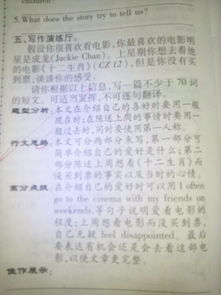英语电影与文学
Exploring the Interplay Between Literature and Film
Literature and film, two distinct yet interconnected art forms, have shared a rich history of collaboration and adaptation. This essay delves into the dynamic relationship between literature and film in the realm of English language arts, examining their mutual influence, adaptation processes, and the unique elements each medium brings to storytelling.
Literature: The Foundation of Cinematic Narratives
Literature serves as the bedrock of cinematic narratives, providing filmmakers with a treasure trove of stories, characters, and themes to adapt and reinterpret. Classic literary works, such as Shakespeare's plays, Jane Austen's novels, and F. Scott Fitzgerald's "The Great Gatsby," have found new life on the silver screen, captivating audiences with their timeless tales.
One of the primary appeals of adapting literature into film lies in the opportunity to visually bring beloved stories to life. Through the lens of skilled directors and cinematographers, literary landscapes are transformed into vivid cinematic experiences, inviting viewers to immerse themselves in worlds crafted by words.
Moreover, literature often offers filmmakers a depth of character development and thematic exploration that serves as a solid foundation for cinematic adaptation. Characters with rich backstories, complex motivations, and moral dilemmas provide actors and directors with ample material for nuanced performances and thoughtprovoking storytelling.
The Art of Adaptation: Translating Words to Images
Adapting literature to film is a delicate balancing act that requires careful consideration of both the source material and the cinematic medium. Filmmakers must navigate the challenges of condensing lengthy narratives, capturing the essence of characters, and preserving the thematic integrity of the original work.
One of the key challenges in adaptation lies in translating the internal monologues and descriptive prose of literature into visual storytelling. Filmmakers employ various techniques, such as voiceover narration, visual metaphors, and symbolic imagery, to convey the inner thoughts and emotions of characters without relying solely on dialogue.
Furthermore, adaptation often involves making creative choices to streamline the narrative and enhance its cinematic impact. This may entail merging or omitting certain plotlines, altering character arcs, or updating settings and dialogue to resonate with contemporary audiences while staying true to the spirit of the original work.
The Power of Interpretation: Literature and Film as Parallel Art Forms

While literature and film each possess their own unique strengths and conventions, they share a common goal: to engage audiences and provoke emotional and intellectual responses. Despite their differences in medium, both forms of storytelling rely on the power of interpretation to convey meaning and evoke empathy.
Literature allows readers to engage in active interpretation, inviting them to visualize scenes, empathize with characters, and ponder the deeper themes and messages embedded within the text. The act of reading is a deeply personal and immersive experience, allowing readers to form intimate connections with the story and its characters.
Similarly, film offers audiences a visual and auditory experience that stimulates the senses and elicits emotional responses. Through the use of cinematography, sound design, and editing, filmmakers can evoke mood, atmosphere, and tension, guiding viewers on a journey of sight and sound that resonates long after the credits roll.
Conclusion: A Symbiotic Relationship
In conclusion, the relationship between literature and film is a symbiotic one, characterized by mutual influence, adaptation, and interpretation. While literature provides the source material and thematic depth, film offers a visual and auditory canvas through which stories can be brought to life in new and captivating ways.
Whether through faithful adaptations or bold reinterpretations, the interplay between literature and film continues to enrich our cultural landscape, offering audiences a diverse array of stories and experiences to explore. By embracing the unique strengths of both mediums, storytellers can continue to push the boundaries of narrative expression and inspire generations to come.
This symbiotic relationship between literature and film not only enriches the artistic landscape but also offers audiences a diverse array of stories and experiences to explore and cherish for generations to come. Through faithful adaptations or bold reinterpretations, the interplay between these two mediums continues to captivate, entertain, and inspire audiences worldwide.
Word Count: 703 words
关键词:关于文学与电影的关系以前是文学是电影之母而如今则是关于文学和电影的关系以前是文学是电影之母而如今英语电影与文学
上一篇:电脑艺术设计试题答案
下一篇:北京电大成人教育学院官网
